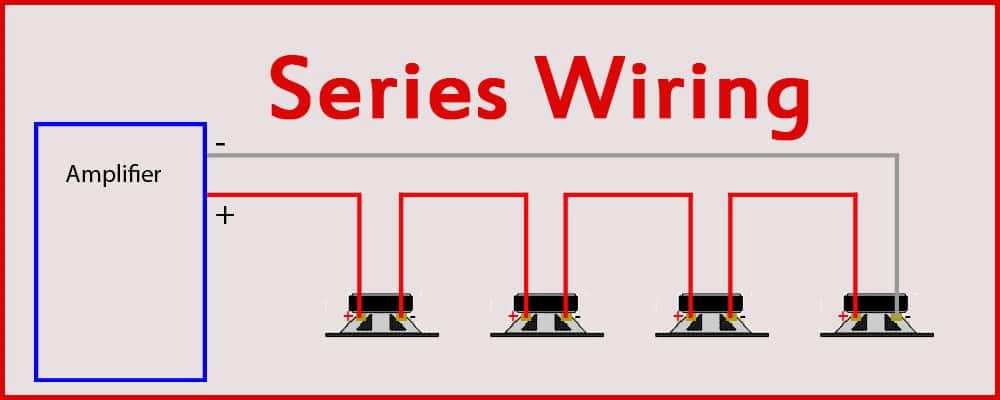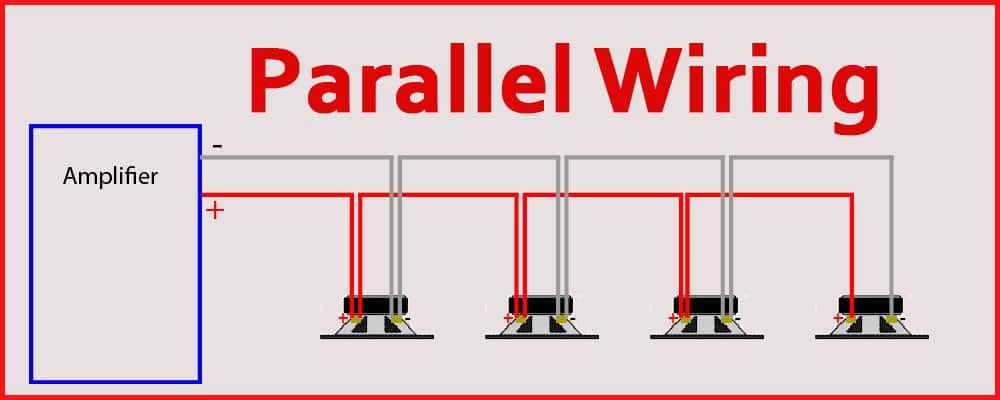A lot of people assume that they can only connect a couple of speakers to a 2-channel amp. This is not always the case, and in this guide we’re exploring how to connect 4 speakers to a 2-channel amp. There are numerous ways to do this, using a series or a parallel configuration for your speakers. So, whether you need to connect 4 PA speakers to a 2-channel amp or just want to add some extra DJ speakers to a home system, we’ve got the answers.
You need to be cautious when it comes to connecting speakers and amplifiers. Get it wrong and you could end up damaging your equipment, so it isn’t just about getting the best sound, it’s about doing so in a safe and effective way. Read on to find out the different configurations and options for your sound system.

Before getting started, keep in mind the fact that we are talking about amplifiers which power passive speakers. There are active or powered speakers available for DJs and other uses, which makes it simple to get set up. These don’t require the same amplification.
The series configuration was not always recommended, and though it might not get the most out of all of your equipment it is certainly doable. The speakers can work together to create a loud and effective sound, using the full potential of the amp.
If you have decided that series configuration is right for you, follow these steps to connect amp to speakers:

Audiophiles will always argue about which is best, but most agree that a parallel system sounds better if it is connected properly, and if you have a good amp in the first place. You need to make sure there is plenty of power, otherwise the amp’s sound might degrade quickly and end up sounding horrible.
The parallel configuration connects all four of the speakers in a daisy chain configuration. This means that you take a signal from all of the outputs of the amplifier and connect to the positive and negative of the speakers. It’s almost as easy as using a guitar amp where you don’t have any complex wiring.
This is a really simple way to connect four different speakers to one amp without having to work out any complex cabling, and though it isn’t the neatest in the back of your amp, it is effective.

You can also choose to connect using a speaker selector switch. What does this mean?
Well, for a start, this is the safest way to connect all four of the speakers to an amp, and though you will have to buy some extra equipment it is worth doing to ensure that you have a safe setup.
The speaker switch connects to the output of the amplifier, and then connects to all of the speakers individually. The same method is used as above, by connecting both positive and negative ends to the speakers. The cabling is simple, even though you end up with a lot of wires.
The speaker switch means that you can choose the levels going to each of the speakers, effectively splitting the system into two lots of speakers with a control switch to blend between the two.
Because this system isn’t always recommended, it can carry some hazards you need to be aware of. Our simple tips will help you to get to grips with it.
It’s up to you to make a choice of which method to use. The three ways above all have their own pros and cons, but they can all get the job done.
As with many different aspects of audio, where there is a will, there is a way. Some people want to connect four speakers to give a more well-rounded sound that fills more of the room, and whether you are a DJ or producer, or just a music enthusiast, knowing how to connect 4 speakers to a 2-channel amp can be helpful. There is always the option of upgrading your equipment, and larger amps with more outputs may do a better job anyway, but it is good to know that you have an option if you are in a pinch.
It’s worth repeating that there are some hazards attached if you don’t take precautions, so always make sure you are doing things in a safe way.